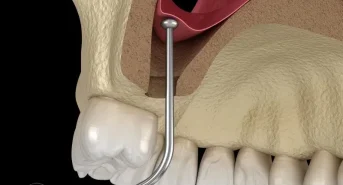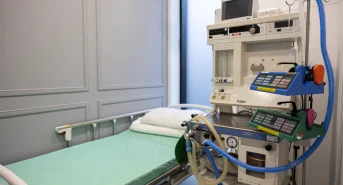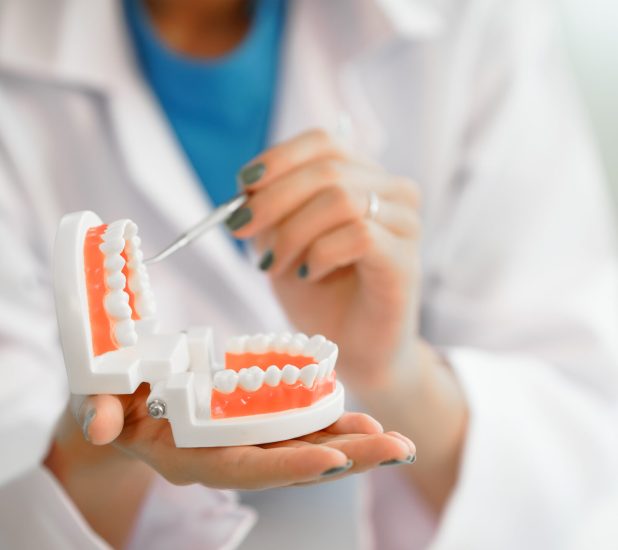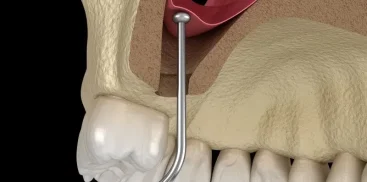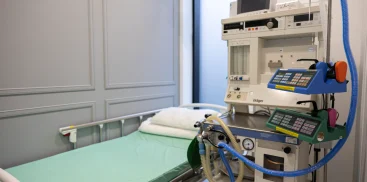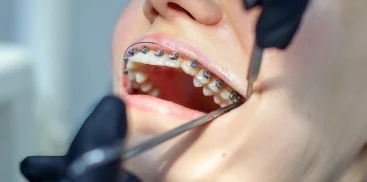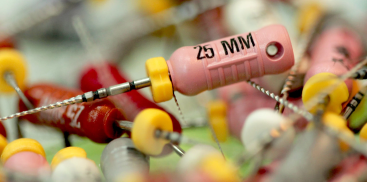Pain while eating, bleeding, lowering of the gums, exposure of the neck and root of the tooth – these symptoms often indicate gum recession.
What is this disease?
What is its cause and how to treat it?
It is worth knowing the answers to these and many other questions.
The text below will help you find them.
Gum recession – what is it?
Gum recession is a condition in which the root surface is exposed when the gums move away.
In this way, the dental neck is exposed and, consequently, the tooth is elongated.
Recession often affects the gums around the canines, and observing these teeth can help make an early diagnosis.
At the same time, recession is one of the most advanced forms of gum disease.
Causes of gum recession
There are many causes that can lead to gum recession.
Some of them are related to incorrect performance of daily activities, and others – to the occurrence of concomitant diseases.
The most common reasons for gum recession include:
- improper, too strong brushing of teeth,
- insufficient oral hygiene, leading to excessive accumulation of tartar, which then destroys the gums,
- addictive cigarette smoking,
- frequent and strong teeth grinding and jaw clenching, which consequently damages the enamel and gums,
- periodontitis, leading to the so-called
gum pockets, which are at high risk of inflammation and, consequently, of teeth loosening and falling out.
The first symptoms of the disease
One of the first symptoms of gum recession is the appearance of tooth hypersensitivity.
It results from the exposure of the tooth neck, which was previously tightly surrounded by the gum.
Although previously eating foods with a lot of sugar or cold drinks was not a problem, now it is often accompanied by pain.
In such a case, it is a clear signal that the patient suffers from the so-called
receding gums.
If we notice in ourselves
tooth hypersensitivity, it is worth consulting your health condition with a doctor as soon as possible.
The course of gum recession
Gum recession develops over a long period of time, and although at first many patients confuse it with traditional tooth sensitivity, it also quickly causes additional symptoms.
In addition to pain and visible exposure of the neck of the teeth, sick people may also notice progressive atrophy of the gums, tissue loss, as well as increasingly severe tooth abrasion and enamel defects.
Moreover, over time, teeth become loose and the susceptibility to caries increases.
In extreme cases, recession may also lead to inflammation of the pulp, which will require the initiation of root canal treatment.
Ways to treat recession
Treating a recession is not easy, but today there are many methods that allow you to achieve positive results.
Doctors and patients can choose from both less and more invasive techniques, each of which helps stop further development of gum recession.
The dentist will choose the best treatment method for a given patient, but it is worth knowing that to cure gum recession, you can use one of the following solutions:
covering gum recession with a composite material – thanks to this, hypersensitivity will be reduced and the exposed part of the tooth will be covered again;
smoothing the surface of the tooth root and removing tartar – takes place above and below the gum line so that the area where the gums meet the teeth is as uniform as possible.
Then, your dentist may recommend rinsing your mouth with an antiseptic mouthwash.
To obtain full effects, it is often necessary to repeat the procedure several times, and in case of excessive pain or hypersensitivity of the patient, local anesthesia may be used;
surgical procedure – involves the reconstruction of disappearing gums;
gum graft – this is definitely the most radical of the described methods.
It is used in the case of very
the disease was at an advanced stage and a piece of gum was lost.
A gum transplant involves re-covering the exposed tooth root, which is made possible by transferring a fragment of the palate or gum from another area of the mouth, to the area affected by recession;
tunnel treatment – an alternative method that involves taking a fragment of gum from another place in the mouth.
After completing this stage, the tissue is implanted into a tunnel made by the oral surgeon and then sewn on with special dental threads.
When preparing for the procedure, it is worth remembering that after its completion, the treated area will be hypersensitive to touch and visibly bloodshot for some time.
To improve the quality of life of patients, doctors recommend avoiding wounds with a brush when washing them, and instead using special rinsing fluids.
The patient’s menu should include dishes that are not too hot and do not require excessive chewing, and drinking alcohol and smoking cigarettes is strictly prohibited during the recovery period.
How to prevent?
To prevent gum recession, you should pay great attention to brushing your teeth properly and frequently.
You should also not forget about flossing, which will allow you to regularly remove tartar.
It is also worth, if possible, eliminating factors that may influence the appearance and development of gum recession, such as excessive amounts of food causing plaque formation or nicotine products.
Sometimes it happens that the gum separates from the tooth due to untreated malocclusion.
In such a case, it is necessary to consult an orthodontist and start comprehensive treatment, thanks to which the patient’s teeth will be positioned correctly.
Consequences of not treating the recession
The result of untreated recession may be various periodontal diseases, and in a more radical form – also gum atrophy.
Although dentistry is very popular today
developed field of medicine and allows the treatment of even very advanced diseases, it is not worth taking risks and exposing yourself to unnecessary dental problems.
It is also possible to develop bone inflammation, affecting the condition of the entire body.
Summary
Today, gum recession is a disease that affects an increasing number of people of all ages.
This is why it is so important to brush your teeth properly and maintain a high level of oral hygiene.
To avoid the disease, you should visit the dentist regularly and take care of your teeth and gums.
If you have any suspicions, do not delay consulting a dentist, but visit a doctor as soon as possible and, if necessary, make an appointment for a treatment that will help solve the painful problem.

